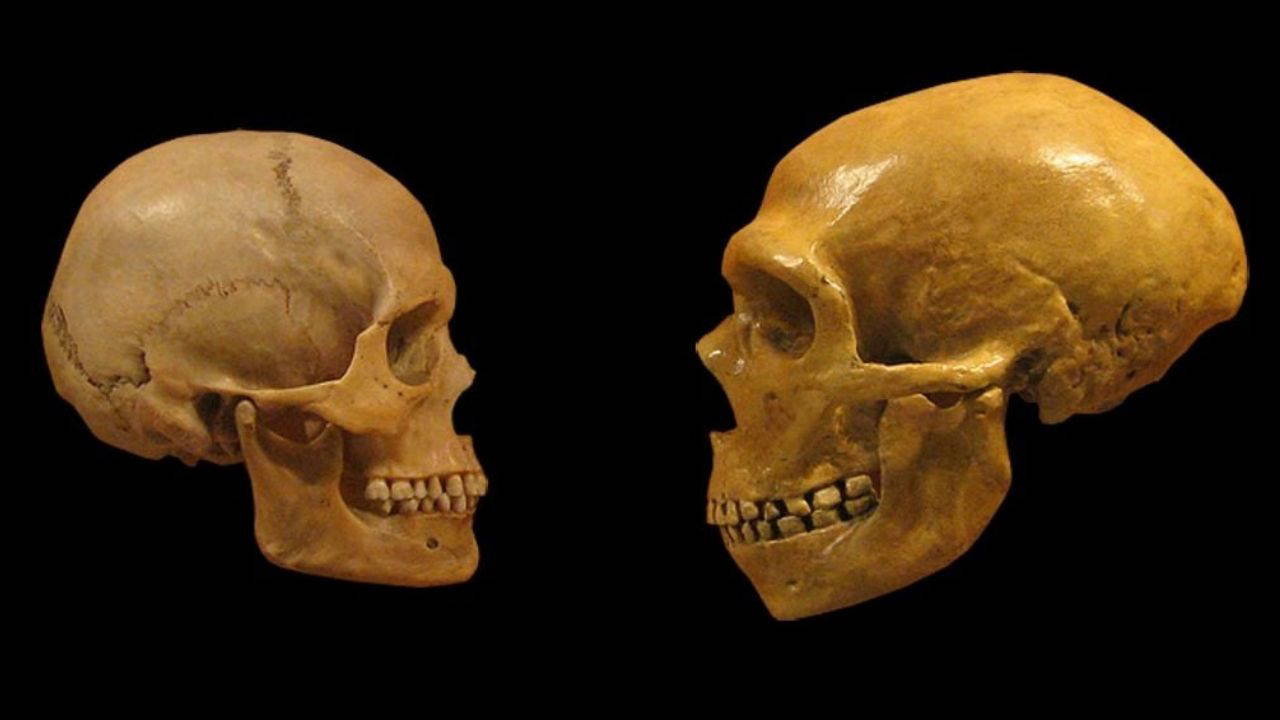People's teeth take their final shape according to what they eat.

One of our greatest evolutionary advantages as humans is our teeth. This combination of molars, canines, and incisors allows us to eat a diverse, omnivorous diet unlike many other animals. This dramatically expands the menu of available energy sources, improving our nutritional choices and our chances of survival. But according to a study published last week in Science, our teeth may have evolved because our early hominin ancestors wanted to bite off more than they could chew.
As reported in Popular Science, the findings, from a research team led by scientists at Dartmouth College, provide the first known example in the human fossil record of what is known as behavioral scavenging—the tendency for a species to develop routines beneficial to its survival before its physiology has evolved to meet the demands.
“We can say with certainty that hominins were quite flexible when it came to behavior, and that this gave them an advantage,” says Luke Fannin, an anthropologist and lead author of the paper.
EARLY HUMAN BEHAVIOR HAS ITS OWN UNIQUE EVOLUTIONFannin explains that anthropologists often discuss behavioral and morphological changes in hominins as if they co-evolved. But the team's analysis shows that early human behavior had its own unique evolutionary force—a force with profound consequences for our physical and nutritional journeys.
Fannin and his colleagues reached their conclusions by examining multiple sets of fossil teeth from various hominin and primate species. They began with a distant relative, Australopithecus afarensis, from 3.9 to 2.9 million years ago. The researchers were particularly interested in this species' graminoid levels—the carbon and oxygen isotopes left over from its consumption of grasses and sedges. They also examined fossil teeth from two extinct primate species that lived contemporaneously with A. afarensis: giant terrestrial apes called theropoids, which resemble baboons, and smaller omnivorous apes known as colobines.

The team discovered that A. afarensis, theropoids, and colobines initially favored a diet rich in insects, fruits, and flowers, but began shifting to harder, graminoid-dominated sedges and grasses between 3.4 and 4.8 million years ago. However, these shifting palettes emerged at least 700,000 years ago, before the species' teeth and digestive systems became adapted to these foliage species.
Then, around 2.3 million years later, hominin teeth began to show significantly smaller amounts of oxygen and carbon isotopes. Researchers believe this suggests that humans' ancestors at that time, Homo rudolfensis, reduced their grass intake due to oxygen-depleted waters. Scientists offer three possible theories. One scenario is that H. rudolfensis simply drank significantly more water than other primates and animals in Africa. Another hypothesis is that they adopted a behavior similar to modern hippos, spending their days in the water and feeding at night. However, the most consistent explanation with early human behavior is that hominins began gathering carbohydrate-rich plant parts found underground, such as tubers and bulbs.
This last argument is consistent with a species that was rapidly expanding in size and numbers. Energy-rich plants were ubiquitous, didn't resist prey, and were far more nutritious. At this point in history, ancient humans had also begun making stone tools, making it much easier to forage for underground plants.
“We propose that this shift to below-ground food was a landmark in our evolution,” Fannin says. “Perennial plants created a carbohydrate glut that our ancestors could access and feed themselves and others at any time of year.
According to the study's senior author, Nathaniel Dominy, one of the "burning questions" in anthropology is: "What did hominins do differently that other primates didn't?"
“This study suggests that the ability to utilize grass tissues may be our secret sauce,” he says.
Cumhuriyet





